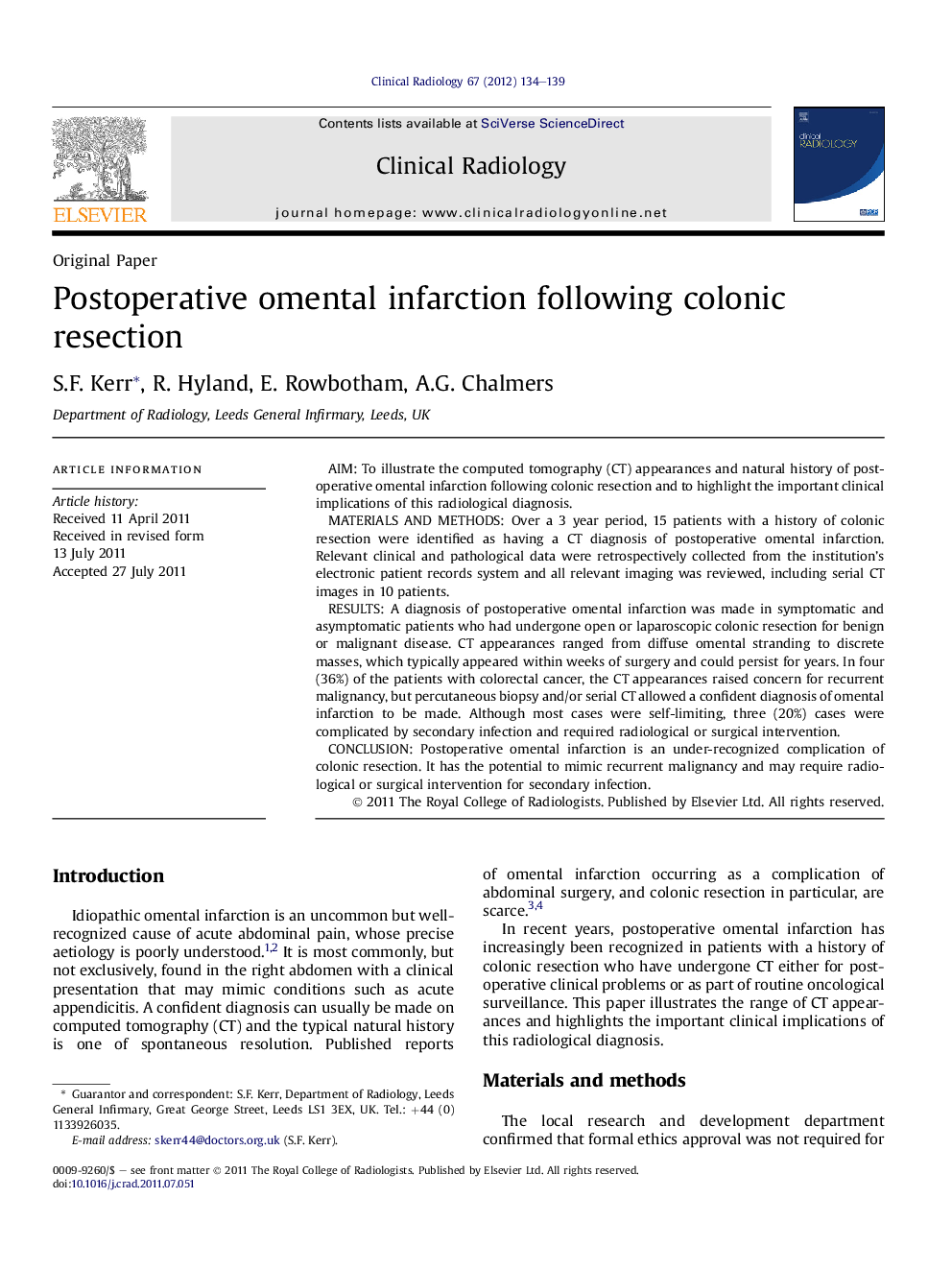| Article ID | Journal | Published Year | Pages | File Type |
|---|---|---|---|---|
| 3982320 | Clinical Radiology | 2012 | 6 Pages |
AimTo illustrate the computed tomography (CT) appearances and natural history of postoperative omental infarction following colonic resection and to highlight the important clinical implications of this radiological diagnosis.Materials and methodsOver a 3 year period, 15 patients with a history of colonic resection were identified as having a CT diagnosis of postoperative omental infarction. Relevant clinical and pathological data were retrospectively collected from the institution’s electronic patient records system and all relevant imaging was reviewed, including serial CT images in 10 patients.ResultsA diagnosis of postoperative omental infarction was made in symptomatic and asymptomatic patients who had undergone open or laparoscopic colonic resection for benign or malignant disease. CT appearances ranged from diffuse omental stranding to discrete masses, which typically appeared within weeks of surgery and could persist for years. In four (36%) of the patients with colorectal cancer, the CT appearances raised concern for recurrent malignancy, but percutaneous biopsy and/or serial CT allowed a confident diagnosis of omental infarction to be made. Although most cases were self-limiting, three (20%) cases were complicated by secondary infection and required radiological or surgical intervention.ConclusionPostoperative omental infarction is an under-recognized complication of colonic resection. It has the potential to mimic recurrent malignancy and may require radiological or surgical intervention for secondary infection.
